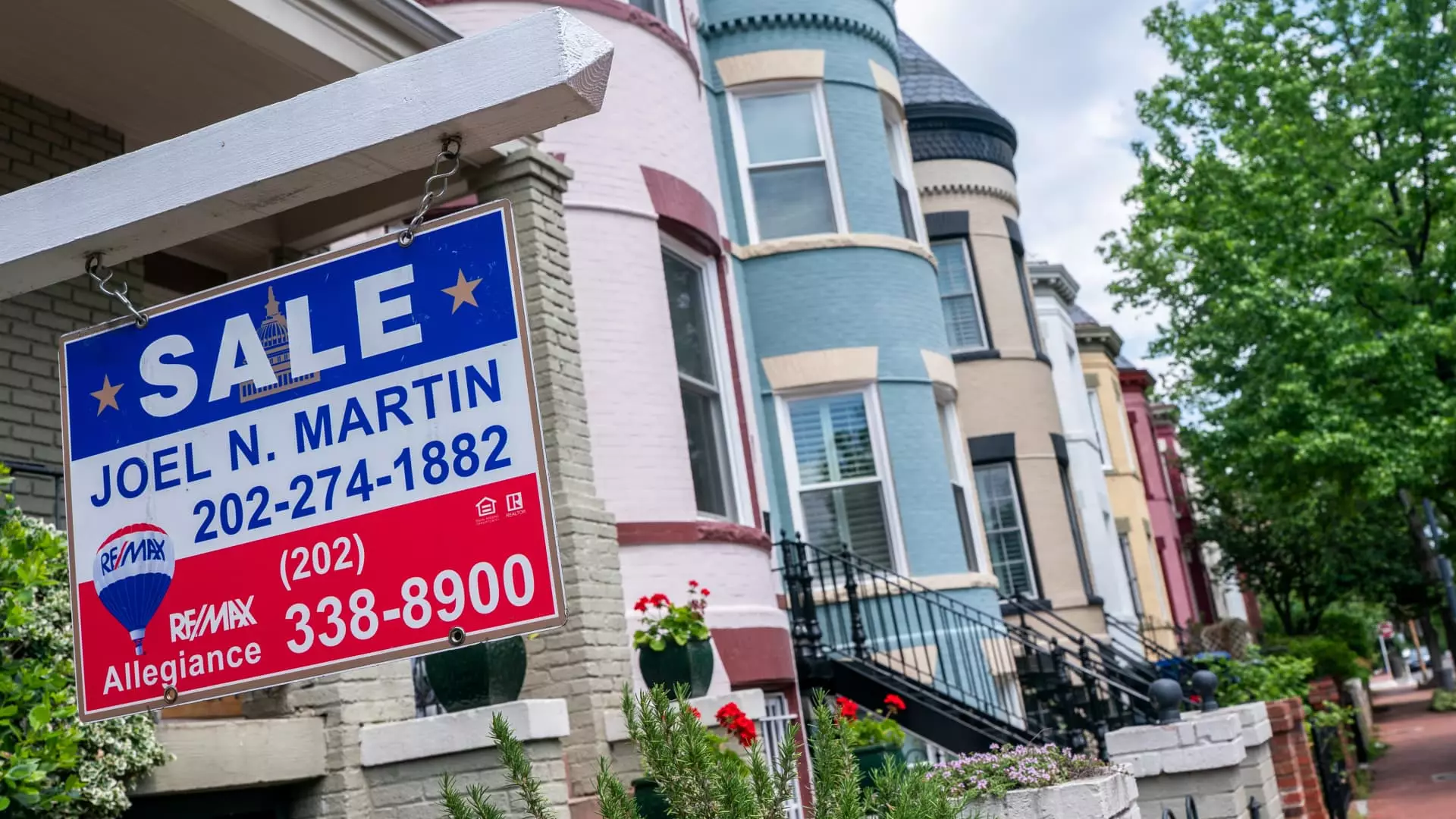The current spring housing market paints a disheartening picture, plagued by high interest rates and waning consumer confidence. Despite superficial indicators suggesting some stability, the deeper implications for potential homeowners are sobering. According to the National Association of Realtors (NAR), sales of previously owned homes decreased by 0.5% in April, culminating in an annualized rate of a mere 4 million units. This figure marks the slowest pace for April since 2009, a time when the housing market was in dire straits following the recession. Year-over-year, the scene is just as bleak, with a 2% decrease in sales compared to April of the previous year. Such trends indicate that the anticipated revival—predicted by economists at a 2.7% increase—has instead been a mirage.
The disconnect between rising employment figures and a languishing housing market cannot be overstated. As Lawrence Yun, NAR’s chief economist, pointed out, home sales have languished at only 75% of the pre-pandemic activity level over the past three years. During a time when the job market has reportedly added seven million jobs, the resilience of the housing sector appears both fragile and fraught with complications.
Inventory Levels: A Mixed Blessing
In an unsettling twist, inventory levels have surged—up 9% month-over-month and nearly 21% year-over-year—culminating in a total of 1.45 million homes available at the end of April. This trend should ideally signal a healthy market correction; however, it instead highlights the increased difficulties homeowners face in this climate. Inventory is at a 4.4-month supply based on current sales rates, the highest level in five years, yet still falls short of the six-month inventory deemed necessary for a balanced market. Last year, homeowners faced even greater challenges with only a 3.5-month supply.
In theory, an increase in inventory would offer buyers better negotiation power, a notion Yun corroborates by stating we are in a “mild seller’s market.” Nevertheless, this “mildness” should not obscure the fundamental issues at hand. As more options become available, it could easily lead to price stagnation or, worse yet, decline. The median home price hitting an all-time April high of $414,000 reflects just a 1.8% rise from last year, underscoring a stagnation in appreciation rates that hardly inspire confidence in the face of persistent economic uncertainty.
Market Challenges for Buyers
First-time buyers, who represent 34% of sales, are navigating a difficult landscape marked by increasing cancellation rates that recently climbed to 7%. This figure starkly contrasts with the previous 3% to 4% average, suggesting that buyers are hesitant and perhaps view the market as less favorable due to rising interest rates and economic instability. It is a troubling sign that many contracts are now abandoned rather than successfully executed.
Interestingly, the luxury segment continues to possess a certain allure, with sales of homes priced over $1 million showing a nearly 6% increase from last year. However, it is important to question whether this segment is simply a bubble waiting to burst, as the same shake-outs affecting the stock market could lead to downward pressure in this elite sector as well.
The Future of Housing: A Cautionary Outlook
As we survey the housing landscape, it becomes clear that while there is a tantalizing glimpse of potential recovery, the immediate reality is one of stagnation and uncertainty. The notion that undoing decades of distorted housing policies and economic factors can be remedied by an uptick in inventory is overly simplistic. The complexity of the housing market requires nuanced understanding and thoughtful action that extends beyond mere numbers.
The influence of economic policy and market forces on housing demand can no longer be understated. The trends we observe today indicate that without significant changes—such as alleviating burdensome interest rates and boosting consumer confidence—the housing market may linger in its current state of malaise. What is needed now is an urgent response from policymakers and thoughtful industry leaders to revitalize this sector, or else we risk consigning another generation to a frustrating and unattainable search for homeownership.

